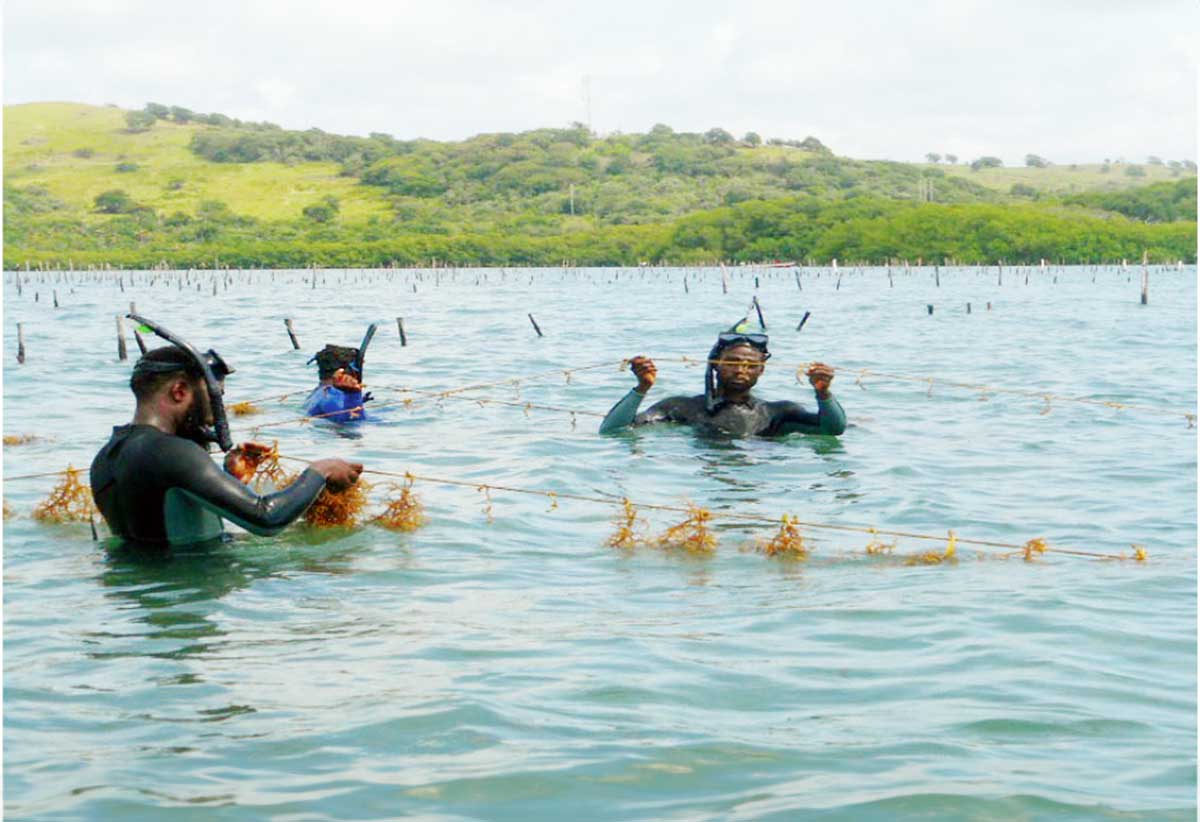
WITH Saint Lucian agricultural products in the external markets on high demand – a key stakeholder is proposing that the island should do more to manufacture agro-processed branded by-products.
Personnel from Export Saint Lucia [ESL] – the island’s leading export agency are reporting successful gains from the Export Dubai promotions and tour that was held earlier this year.
According to ESL’s Chief Executive Officer (CEO) Sunita Daniel, upon completion of the promotional trip, stakeholders met to assess and identify the merits or demerits of that exercise.
The ESL official disclosed that since the Expo Dubai event, Saint Lucia has exported four shipments of sea moss and other products to Dubai.
“Dubai is a new market for Saint Lucia and we have sustained exports going there, and sea moss, in particular, is doing very well in the market,” Daniel told reporters at a recent media briefing.
“We have also had a recent shipment of soap that is manufactured in Saint Lucia going to Dubai. So, these are all the opportunities that exist and we look forward to participating in other expos, so we will have the opportunity to explore non-traditional markets for Saint Lucian products,” she added.
Daniel noted that while ESL has been working with traditional exports, nonetheless “we have diversified quite a lot (with) the exports coming out of Saint Lucia and people are making a very good living and there is potential to generate more revenue from these diversified products …but also fundamentally, we don’t forget that we still need to produce bananas, and our plantains because the market still demands those”.
She said there is also an increased demand for Saint Lucian breadfruit, since “Saint Lucia is the only island in the southern OECS that still exports breadfruit …and we also have demand for breadfruits to the external markets and we’re exploring ways of looking at a ‘Lucian breadfruit’ and placing Lucian-branded breadfruit on the international market.”
Daniel reckons that in the same way that other countries promote their branded products, likewise, Saint Lucia is exploring means to make breadfruit a branded product “because of the peculiar characteristics of our breadfruit that other markets don’t have”.
She described the local crop as a “big round breadfruit with yellow inside, which is very good for roasting …and these are the characteristics on which we are now going to market the Saint Lucian breadfruit.”
Considering the challenges with shipping and transportation costs, how best can the country meet the demands for banana export in the region?
Daniel recalls that the major problem with exports to the UK market did not generate around the quantities produced, but more specifically “the quantity of the fruit that was being exported to the UK market.”
To address that issue, she said, late last year the government provided support to the National Fair Trade Organisation (NFTO) and they received “monetary support” to deal with those issues.
The ESL official notes that particular attention has been focused on the “quality of the fruit” to ensure that the disease that affected bananas has been addressed and “they can meet the quantities that are demanded externally”.
With Tropical Strom Bret destroying about 85% of the banana crops on the island, said Daniel, bananas would take a few months to get back on stream. Out of all of this, she added, “The only good thing that happened is that the banana (plant) was snapped and it would take a shorter time for it to grow back. But we do anticipate coming from NFTO that by the end of October (to) November, we should be seeing those amounts again in bananas being grown and exported.”
Daniel noted that there is a major issue with transportation within the region. However, she said, there are some “stable routes” that can be used regularly and there are smaller schooners that can be used.
Also, with Tropical Shipping there are smaller routes that can be utilised to export. The ESL official reported that over the past two months, there have been regular shipments, particularly to the Northern Caribbean “and we’ve done those using containerized shipment through Tropical …and we’ve had reports of 0% wastage when they(crop) got to Saint Martin”.
She said the proximity of the Saint Martin market has “worked in our favour and it takes a shorter time to get to the market. So, the routes exist, not as many as we would like but they do exist for us to export.”
As for meeting the demands or contractual arrangements with the external markets, Daniel explained that the ESL deals with “business people” when they go out into these markets and they are normally owners of the big food distribution channels.
“One of the things that we’ve learned to do is to communicate and keep the communication open and honest with them,” she said. “Most times, they are aware of a storm that has impacted our production cycle, (and) they are aware, but we do let them know that we’ve experienced those issues. What we cannot do though is prevent them from going anywhere else to look for a supplier.”
Daniel said that in the past five years or more, the agency has found out that there is a particular demand for Saint Lucian agricultural products. “And so, it has been very easy for us to get our distributors back …because we provide a product that is of the highest quality. We provide ‘niche products’ that many other people (suppliers) cannot produce or provide in the same way that we do,” she explained. “So, that is our marketing strategy…because the Saint Lucian products are in high demand by the consumers. It’s the product that you have and the quality of the product that differentiates you in the market. That’s one of the things that we’ve recognized and we keep our relationship and our communication open with these markets and we let them know …and they put temporary measures in place because they have their consumers.”
Nonetheless, she says, certain things have to be done “to ensure that we mitigate against the effects of climate change…and to ensure that when an event occurs, we can quickly get back on our feet.”
Presently, while sea moss continues to be the country’s major export crop, there are other products such as Saint Lucian rums and condiments that “are very big exports”.
Daniel asserted: “We’ve worked hard on diversifying and exporting other products to buffer the loss that we’ve experienced in bananas.”
Moving ahead, the ESL head said, she envisions that the country needs to export “our value-added products as much as possible …and you will get a higher price for that. So, what that requires is for us to have facilities built domestically where they meet the requirements and the certification, the standard requirements and we can do agro-processing and export those.”
Daniel feels it more feasible for the country to export its agricultural by-products instead of its raw products, for instance, “our raw cocoa beans …when we can make good chocolate here in Saint Lucia, and make great products from the cocoa beans itself and export those where you get the profit at a much higher price than when you export the raw product.”
She added: “Saint Lucia is currently doing a lot of value-added sea moss products …so, our role is now to take those value-added products out into the international market.
“The international market has caught on that we have a good thing here and they are going to be doing a lot more, and it’s up to us and we’ve been doing that to keep up to standard. And this is why we’ve tested our sea moss, we’re doing repackaging of our products so that we can meet international markets.”













